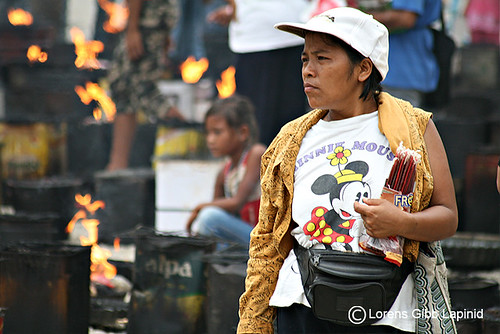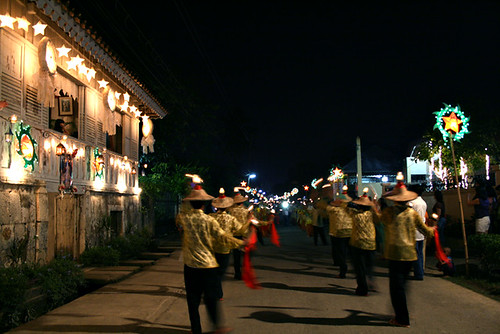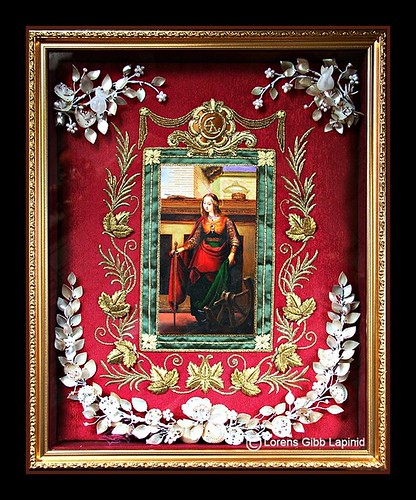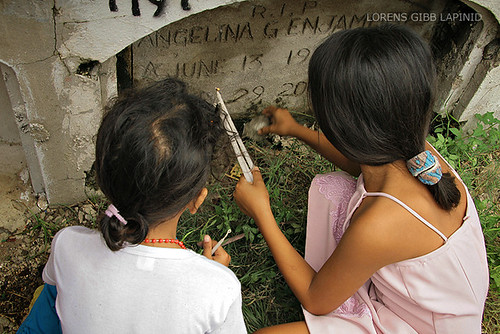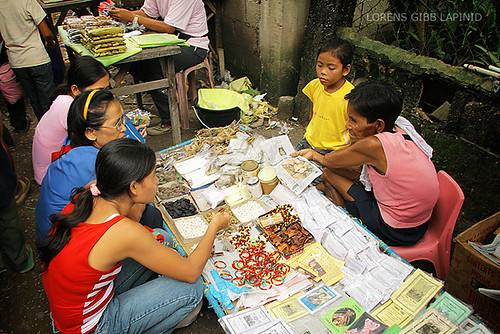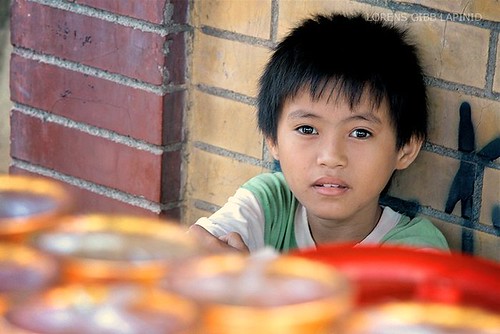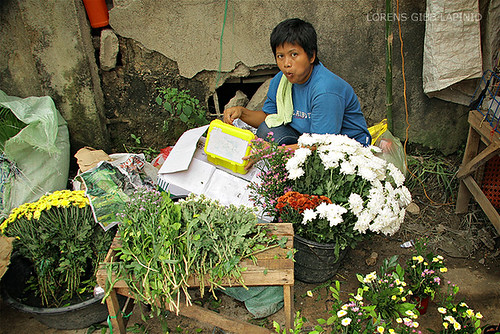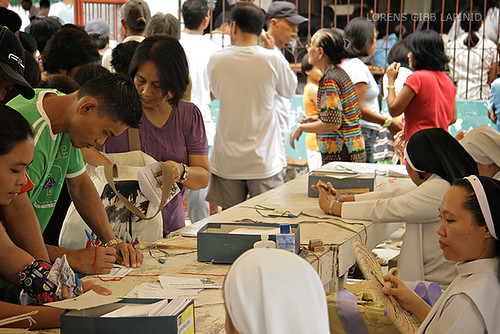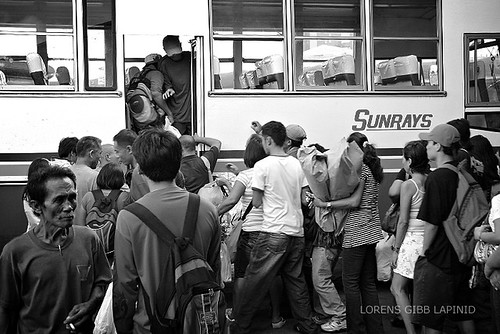The candle vendors are the wanderers of the modern times. They have no known permanent abode. Often coming in large groups wandering from town to town, where fiesta celebrations are.
11.29.2008
The Nomads of Cebu
The candle vendors are the wanderers of the modern times. They have no known permanent abode. Often coming in large groups wandering from town to town, where fiesta celebrations are.
11.28.2008
The Festival of Lights of Carcar
Yet again the fiesta in Carcar came to a close with another emphasis on the life of its patroness St. Catherine of Alexandria. The Festival of Lights is not just a mere spectacle of colorful gaiety but more importantly a way to revive the long forgotten devotion to the virgin-martyr. Four carrozas depicting major events in her life, her journey to sainthood, were paraded down passing through a street aptly named after her.
At the first sound of the drum people started to gather at the Balay na Tisa where the processional image of the saint dating back to the Spanish times is kept. The ceremony is reminiscent of dapit which I witness in my trip to Malolos, Bulacan for the Sto. Niño festival early this year. In dapit, different images of the Holy Child borne on carrozas decorated or not, are brought to the church late in the afternoon for a short procession around the town. The procession is first of the three, the remaining two happens the following day, always falling on the fourth Sunday of January. One in the morning and the grand procession in the evening.
The Festival of Lights is never complete without the Kabkaban dance. Fresh from their win from the previous days Kabkaban Festival, the Carcar Central Highschool dancers lent their talent by igniting the jovial mood of the people gathered around as the procession makes its way to the church for the mass.
A sonorous sound echoes this time coming from the church belfry signaled the end of the mass. Then festal music is played by the band as the carrozas went down the hill. The dancers now have changed to their hats mounted with lamps, from a distance one would see them meander through the narrow streets of the plaza.
The last stretch of the procession is a few hundred meters from the house. And then the last set of sounds from the belfry can be heard from a distance. The carroza finally reached its destination. A few minutes more it started its descent together with the untiring dancers accompanied the the joyous Kabkaban beat. They make their final dance before everyone.
Until the next fiesta!
11.27.2008
Balay na Tisa Collection
Copy of a painting by Spanish Renaissance painter Fernando Yáñez de la Almedina at the Museo del Prado in Madrid. Embroidery by Raffy Lopez in stylized Kabkad fern commonly found in Carcar. Nakar shells done by James Yee.
Carcar, Cebu, Philippines
11.22.2008
St. Catherine of Alexandria
11.11.2008
Die in style
Mortuary services are getting the buzz these days after the e-burol or online wake viewing is becoming the practical option for the departed's relatives abroad. Technology really has it's way.
Also getting enough attention are the artsy custom designed caskets handpainted to suit your style. Make a statement with these. Angels and any other religious themes are the popular designs sought.
The dead come here for their final pampering but the furnitures fashioned like caskets are hauling tourists in. Luckily, I was the sole visitor that day as everybody else got so busy in the cemeteries.
Carcar, Cebu
11.03.2008
Kalag-kalag 2008 Sidelights
11.02.2008
Business as usual
Just in case you forgot your prayers, everything is available here. Amulets, herbs, various concoctions, love potions or what have you, these are popular among visitors.
Candles are the most sought-after commodity. This young boy tends to their makeshift store near the entrace at the public cemetery in Minglanilla town.
This young woman takes an early lunch amidst the hustle and bustle of the narrow street leading to the cemetery. A much needed break indeed. Most vendors have been here a day before Kalag-kalag. Flowers grown from nearby towns are the cheaper alternative and will get more cheaper once the festivities are nearly ending.
Masses are held by the hour. The church has the monopoly of this business. Aside from the pamisa, they also exercise control over the lighting of tombs charging a hefty amount for only two days of use.
11.01.2008
At the last minute
I decided to see for myself the phenomenon at the South Bus Terminal. Cebu being a small island, the only way to get around is by land transpo. And there is no other way to go down south but thru this hub.
It was already 9 am and the place was unusually noisy and hot. A slight drizzle earlier in the morning made the dust settle down but as soon as the sun took its place clouds and clouds of dust started to spread out. The main building is undergoing renovation and there is no space to move around. There was just this unimaginable long line of people meandering through each corner of the building. And as each bus arrived people started pushing themselves inside the narrow bus entrances, unmindful of the kind torture they are in.
I did not want to experience this kind of agony. I took the unpopular route instead.
